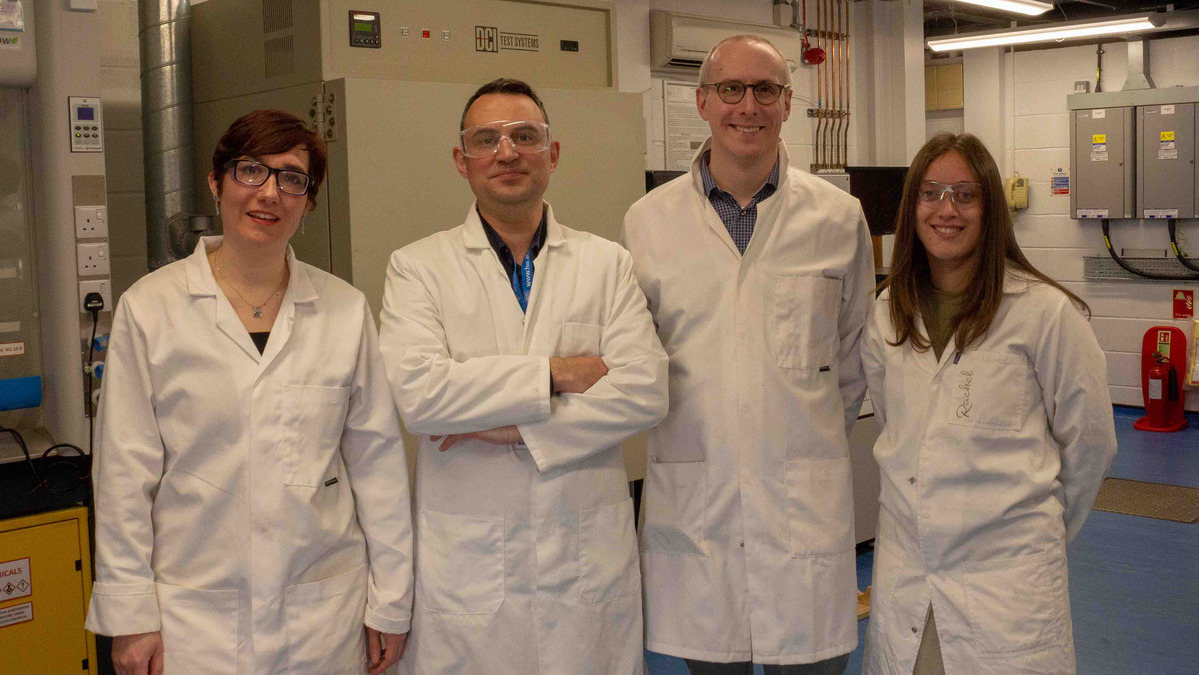Published:

More than $2M has been awarded to marine-based research projects at Heriot-Watt University as part of the race to avoid the worst effects of climate change.
International non-profit research and development entity, the Carbon to Sea Initiative, is funding separate projects at Heriot-Watt that explore how the world's oceans might safely absorb greater volumes of CO2 from the atmosphere.
This comes as scientists warn the Earth is likely to hit the 1.5°C limit set by the Paris climate agreement by 2027, with excess carbon in the atmosphere a major contributor to the higher temperatures.
Theoretically, our oceans are the largest carbon store on the Earth's surface capable of holding around 40 times more than the amount of CO2 in our atmosphere.
Currently, around 25% of all CO2 emitted into the air is captured by the oceans. When these molecules enter the water they cause acidification, leaving a negative impact on marine environments, particularly for shell forming organisms such as crabs and shellfish that rely on fragile eco-systems for survival.
But scientists from the University's School of Engineering & Physical Sciences, believe a rare mineral known as ikaite, could hold the key to unlocking the oceans true potential for carbon storage. Rich in calcium, this mineral, when exposed to sea water, dissolves, and converts CO2 into bicarbonate (HCO3) ions, a chemical compound that neutralises acidity. This marine process is known as ocean alkalinity enhancement (OAE)
Scientists say OAE could lead to significantly more CO2 being absorbed into our oceans for hundreds of thousands of years.
The Crystal Ocean project has received $1.34m from the Carbon to Sea Initiative. Chartered Engineers, Dr Phil Renforth and Dr Spyros Foteinis based at Heriot-Watt's Edinburgh campus, are leading the ambitious project with the aim of manufacturing ikaite, at scale. They are assisted by researchers and academics from Heriot-Watt, the University of Oxford, and the University of Hamburg.
Dr Foteinis explains: “In Crystal Ocean, we will develop and test the world's first prototype for the sustainable synthesis of hydrated carbonate minerals, such as ikaite, from ubiquitous and low-cost limestone. These minerals have great potential for OAE but little is known about their exact synthesis conditions and stability. For this reason, a wide range of experts, spanning from aquatic geochemistry to mathematical modelling to techno-economic and environmental analysis, have been brought together. Our main goal is to optimise and commercialise this game-changing technology within the next few years.”
Dr Phil Renforth, Associate Professor, is leading on the Performance of Ocean Alkalinity Enhancement Technologies (POaET) project together with Heriot-Watt colleague Dr Mijndert van Der Spek. The project is scheduled to run for 30 months and has received $664,000 to develop a new framework for assessing the technical performance and feasibility of OAE designed to give fresh insight into how the ocean manages additional volumes of CO2.
One area of research that has been lacking is an in-depth understanding around what impact the introduction of alkalinity may have on eco-systems and on communities around the world, and what the financial costs of this approach may be.
Dr Renforth adds: “Theoretically, our oceans are the largest carbon store on the Earth's surface capable of holding around 40 times more than the amount of CO2 in our atmosphere. Ocean alkalinity enhancement has enormous potential in terms of CO2 removal but what's novel about this project is that we're creating frameworks for life cycle and technoeconomic assessments. This will, for the first time, standardise the way we assess the effect of OAE and give us a far greater understanding of its impact.
“At present, we have very few life cycle assessments so this is a major challenge as we it's difficult to make decisions around how to design policy or to know which areas should be targeted for future research. Through this project, we aim to change this and produce a detailed breakdown of OAE and its true impact.”
Carbon to the Sea, which is investing $23m in nine projects around the world, says OAE could be the most effective and scalable carbon dioxide removal (CDR) approach there is, based on a landmark U.S. research strategy by the National Academies of Sciences, Engineering, and Medicine.
“If we're going to avoid the worst impacts of climate change, we need to aggressively reduce emissions and remove carbon from the atmosphere,” said Mike Schroepfer, Board Chair of Carbon to Sea and co-founder of Additional Ventures, a purpose-driven organisation that started and spun-out Carbon to Sea.
“Scientists agree that OAE has enormous potential to permanently remove and store carbon and more funding for research is needed. We are here to respond to the call for research funding and answer basic scientific questions about the safety and efficacy of various approaches to OAE. If we find that OAE can be applied at scale, we can unlock one of the most efficient, cost-effective approaches to CDR for humanity. I'm grateful to the whole network of funders, researchers, partners, and the amazing team at Carbon to Sea for their bold commitment to pursue this work.”